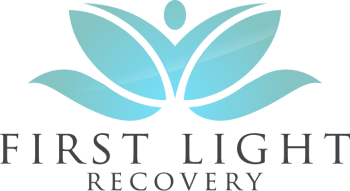There are several schizophrenia-like disorders listed in DSM-5, each determined by specific durations and sets of symptoms. These psychotic disorders resemble schizophrenia and are called schizophrenia spectrum disorders (1). Schizophrenia is the most common of these disorders, and psychologists believe that most of the explanations and treatments offered for schizophrenia also apply to other disorders.
Understanding Schizophrenia
What is Schizophrenia?
Schizophrenia is a severe mental disorder that affects how a person thinks, feels, and behaves. It is characterized by a disconnection from reality, often resulting in hallucinations, delusions, and extremely disordered thinking and behavior.
Symptoms of Schizophrenia
There are three main types of symptoms: positive, negative, and cognitive symptoms.
- Positive symptoms are psychotic behaviors not generally seen in healthy people. These might include hallucinations, delusions, and thought disorders.
- Negative symptoms are associated with disruptions to normal emotions and behaviors. They could manifest as reduced feelings of pleasure, difficulty beginning and sustaining activities, or reduced speaking.
- Cognitive symptoms involve problems with thought processes. These might involve poor “executive functioning” (the ability to understand information and use it to make decisions), trouble focusing or paying attention, or problems with “working memory.”
Types of Psychotic Disorders on the Schizophrenia Spectrum
Psychotic disorders can impact individuals of all ages and backgrounds. Licensed clinicians diagnose these disorders based on psychotic symptoms and a full assessment of other physical and mental health factors.
Schizophrenia: Schizophrenia is the most prevalent type of psychotic disorder. This condition entails substantial behavioral changes. Key features include various psychotic symptoms, such as delusions, hallucinations, disorganized speech, restricted or inappropriate effects, and catatonia. To be clinically diagnosed, symptoms must have occurred for six months or more (1).
Schizoaffective disorder: Schizoaffective disorder refers to having both schizophrenia symptoms and mood disorder symptoms. Key features include symptoms of both schizophrenia and a major depressive or manic episode (2). To be clinically diagnosed, symptoms must have occurred for six months or more.
Schizophreniform disorder: Schizophreniform disorder’s key features include various psychotic symptoms, such as delusions, hallucinations, disorganized speech, restricted or inappropriate effects, and catatonia. Approximately two-thirds of people with this condition develop schizophrenia. Overall, schizophreniform disorder has the same symptoms as schizophrenia, but the symptoms have lasted fewer than six months (2).
Brief psychotic disorder: Brief psychotic disorder refers to short, sudden episodes of psychosis. The episodes respond to specific, stressful situations and generally last less than a month (1). Key features include various psychotic symptoms, such as delusions, hallucinations, disorganized speech, restricted or inappropriate effects, and catatonia. The recovery from these psychotic episodes tends to be quick.
Delusional disorder: Delusional disorder is described as persistent delusions lasting at least one month. Delusions are the primary symptom, and hallucinations are not prominent and are related to the delusional theme. To be diagnosed, no other signs of psychosis should be present, including disorganized speech, grossly disorganized or catatonic behavior, or negative symptoms (1).
Substance-induced psychotic disorder: Substance-induced psychotic disorder refers to having psychotic symptoms associated with drug use or withdrawal. Symptoms disappear once the drugs are no longer in someone’s system. Key features include hallucinations, delusions, or disorganized speech caused directly by a substance, such as an abused drug (2).
Psychotic disorder due to a medical condition: This disorder refers to experiencing psychotic symptoms due to specific medical conditions like brain tumors, head injuries, or dementia. Key features include Hallucinations, delusions, or disorganized speech caused by a medical illness or brain damage (2).
Paraphrenia: This disorder refers to schizophrenia symptoms occurring later in life when people are in their elderly years. Paranoid delusions are one of the most common symptoms of this disorder (1).
Treatments for Schizophrenia
Medication and therapy are the primary treatments for schizophrenia. Antipsychotic medications can reduce symptoms, while various types of therapy can help with the social and emotional impact of the disease.
Living with Schizophrenia
Living with schizophrenia is a lifelong journey. With appropriate treatment, individuals with schizophrenia can lead rewarding and meaningful lives.
Overall, the spectrum of psychotic disorders includes schizophrenia, schizoaffective disorder, delusional disorder, schizophreniform disorder, brief psychotic disorder, and psychosis associated with substance use or medical conditions.
Unfortunately, these disorders often occur during the transition from adolescence to adulthood. The appropriate treatment often includes medication management, evidence-based psychotherapy, and social support, which can significantly improve one’s quality of life.
Understanding schizophrenia and its types is vital not only for the individual diagnosed but also for their families and society. With the proper support and treatment, those with schizophrenia can still lead a fulfilling life.
References:
- Diagnostic and Statistical Manual of Mental Disorders: DSM-5. (2017). American Psychiatric Association.
Comer, R. J., & Comer, J. S. (2017). Abnormal Psychology. Worth Publishers.




